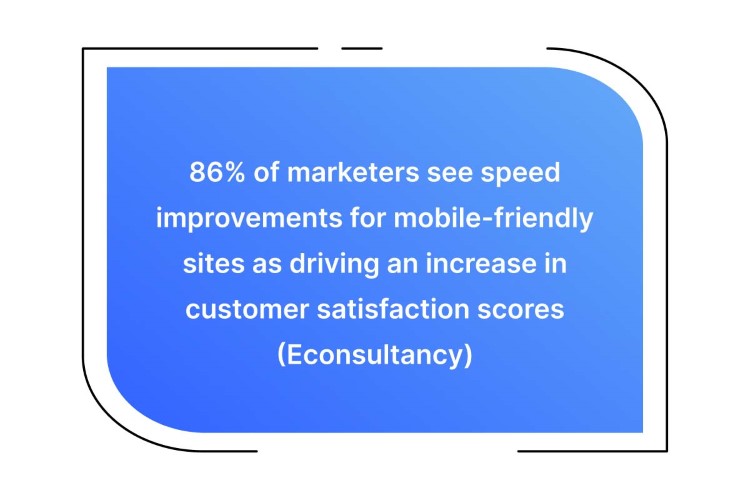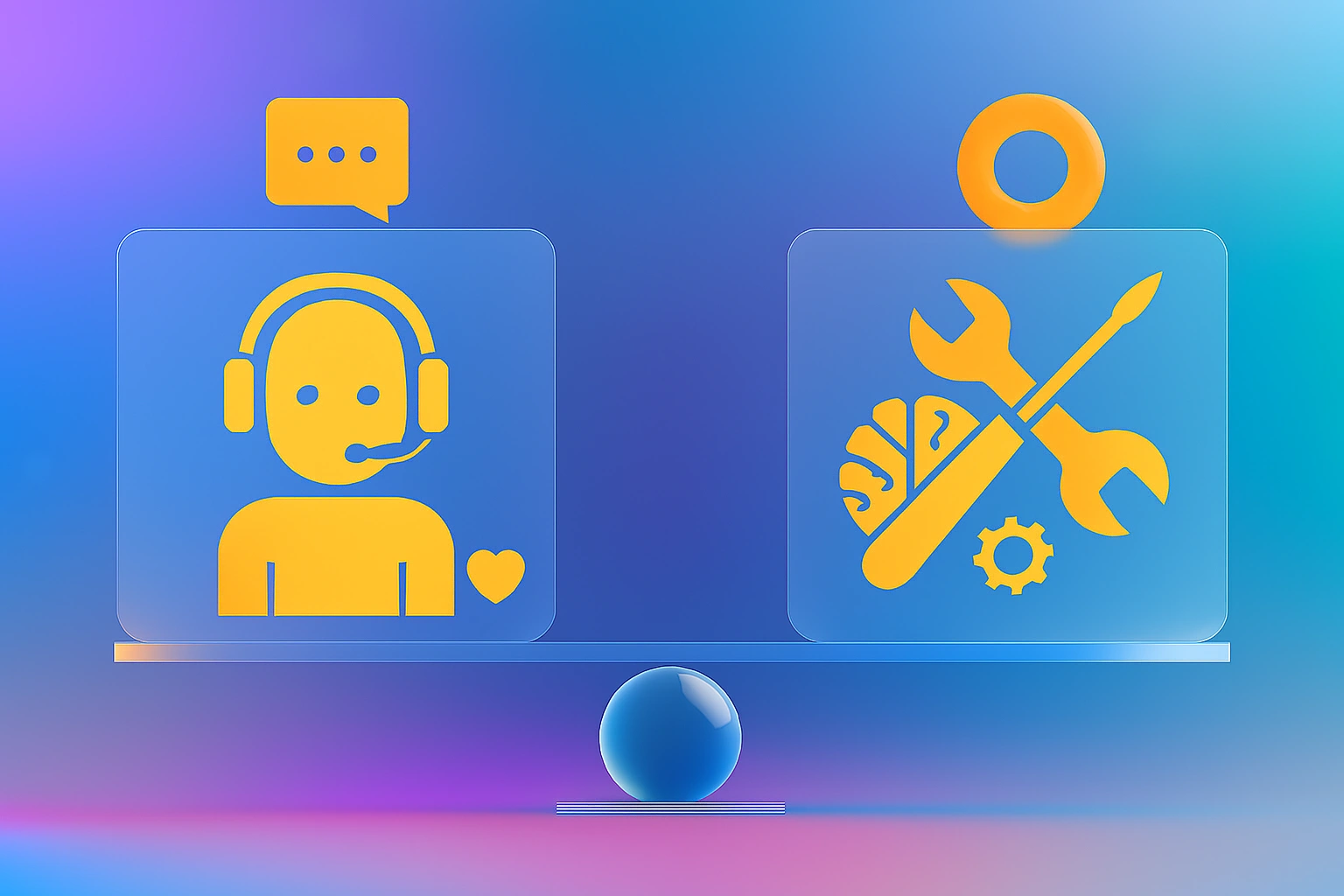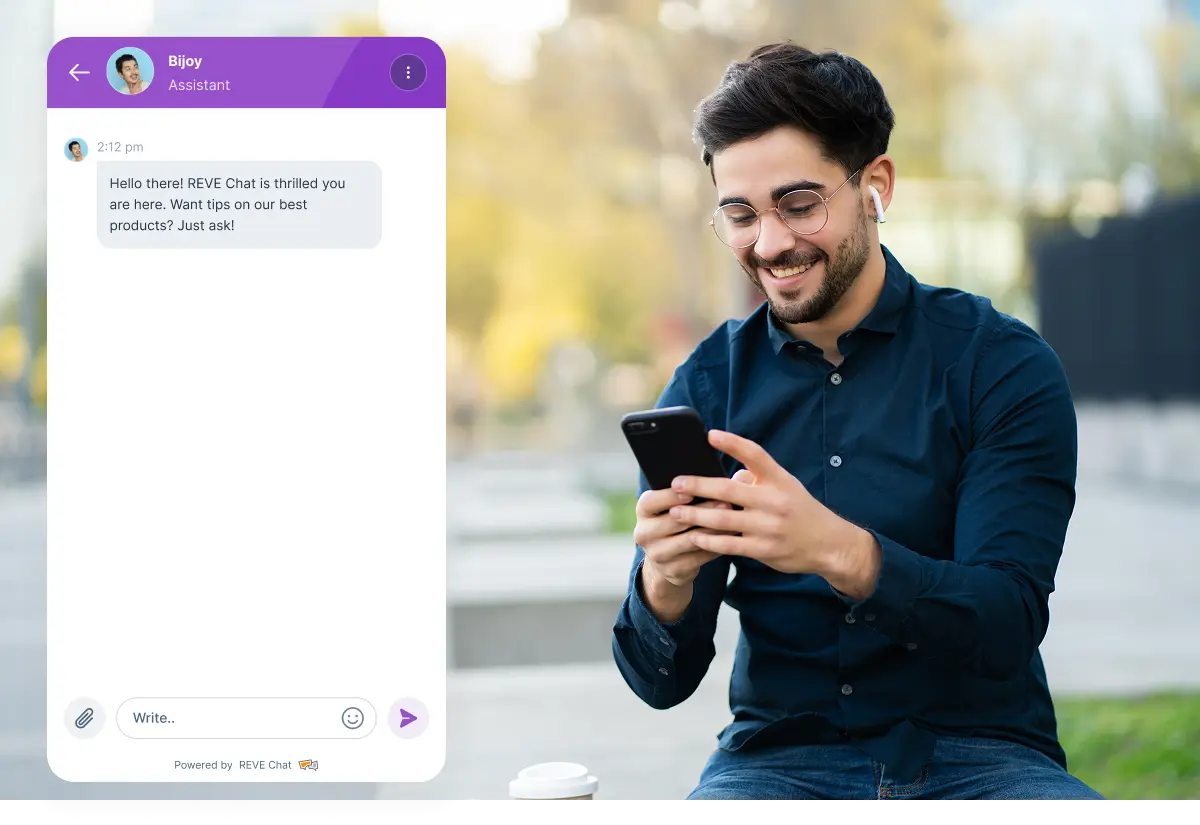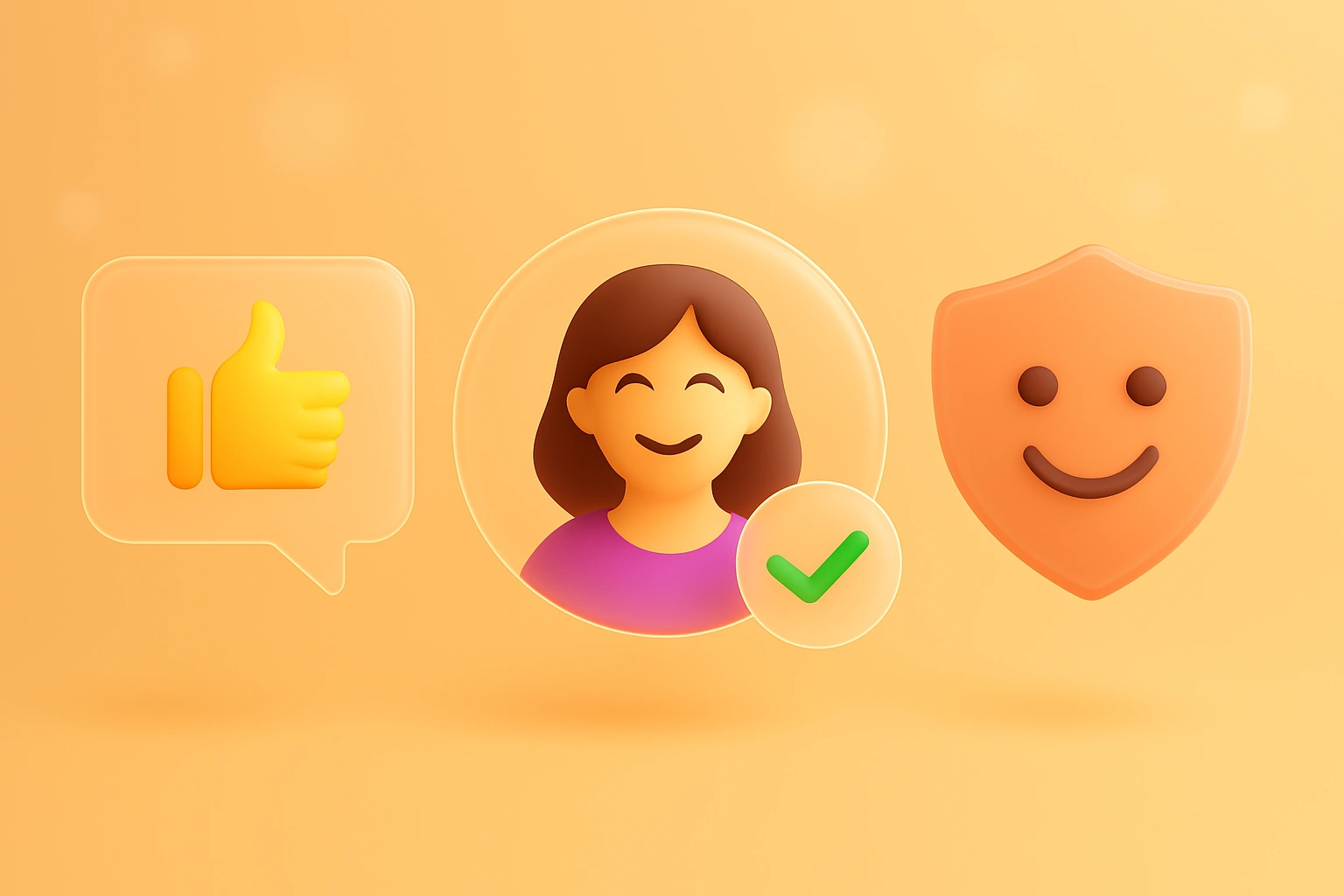Innovate, Adapt, Excel: Mastering CX Optimization
- December 12, 2023
- 23 mins read
- Listen

Table of Content
Everyone’s buzzing about customer experience, but I find it surprising that not many are delving into the realm of customer experience optimization. To me, it’s like steering a ship in the vast sea without a map – you might set sail, but sooner or later, you’re bound to hit some rough patches. It doesn’t matter how fancy your website is, how user-friendly your interface is, or even if you have the best product out there. If you neglect to fine-tune the customer experience and your product falls short of meeting your customers’ expectations, they won’t be coming back for more.Today, I will not discuss the general significance of customer experience for every company. Instead, my emphasis will be on exploring how companies can address it and why they should focus on the optimization of customer experience right now.So, if you are aiming to enhance the customer journey through CX initiatives, this blog is just for you!



What is Customer Experience Optimization?
Customer experience optimization involves developing a profound comprehension of your customers and improving their journey across all interaction points. In essence, it entails embracing a customer-centric mindset.Experience optimization comprises three primary elements:- Optimizing Web Experience: Utilizing tools for both quantitative and qualitative data collection (like Google Analytics and customer surveys) to identify enhancements for your website or app.
- Optimizing Product Experience: Utilizing analytics to assess the performance of a particular product, charting adoption paths for new clients, or employing on-site notifications to highlight any new updates related to features or pricing.
- Optimizing Messaging Experience: Utilizing communication channels such as chatbot, email or SMS texts, and other means to update customers about new developments.
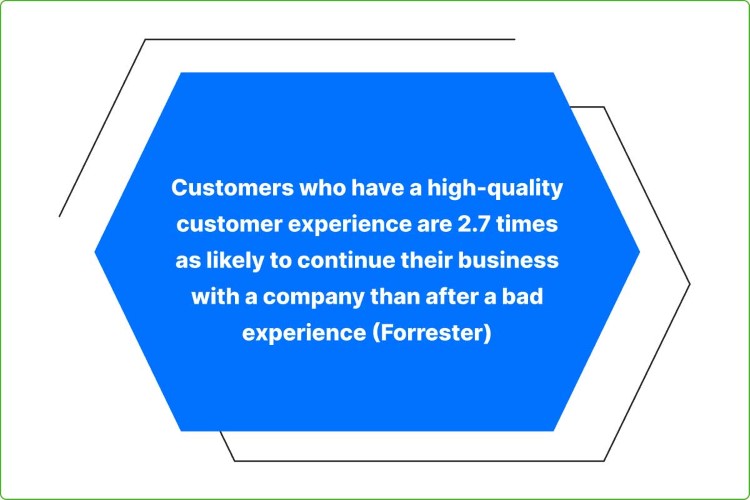
Why Customer Experience Optimization (CXO) Matters?
Happy Customer = Loyal CustomerTo begin with, happy customers tend to be loyal customers. They are inclined to return for future purchases and are also more likely to recommend your products or services to their near and dear ones.Initiating customer happiness is frequently the initial stride toward outstanding customer retention.Satisfied customers are also generally more forgiving. In the event of an error, they are more inclined to grant you a second opportunity compared to individuals who have had a negative experience with your company.-
Streamlined Workflow
-
Enhanced Conversion Rates
-
Increased Revenue, Effortlessly
How to Optimize Customer Experience?
To enhance customer experience, start by comprehending your customers’ current standpoint and their desired destination. Then, augment your existing customer experience strategy in stages to align more closely with your customer’s preferences. Here are a few actions you can take today to gain better control of your CX:1. Collect Feedback from Customers
While it’s easy to assume customer preferences from their interactions with your brand, the most effective approach is to directly inquire about their feelings and preferences—what they like or dislike about your product offerings. There are various approaches you can take, but a few of the most prevalent ones include:- Surveys: Seeking direct feedback from your customers is consistently a wise approach. You can employ methods such as email surveys, pop-up surveys on your website, simply ask them in a call or chat interactions and during their visit to your store.
- Social Media Platforms: Examine the sentiments expressed about your brand on social media. Are people really happy with your brand, or do they offer suggestions for enhancement?
- Customer Support Logs: Identify the common reasons people are reaching out to your customer service department. If you notice recurring complaints, it signals the need for a change.
- Reporting & Analytics: Examine the usage data of your website and mobile app. Identify areas where users are disengaging and pinpoint pages with the most prolonged visits. This provides insights into your customer journey, shedding light on areas that may contribute to a less-than-optimal customer experience.
2. Examine Session Recordings and Heatmaps
Examine the user interactions on your website or app more closely. While the previously mentioned usage data provides valuable quantitative insights, it may not offer a complete picture. This is where user session recordings and heatmaps come into play.Witness firsthand how individuals interact with your website or app through user session recordings, enabling the identification of usability issues. Heatmaps reveal the areas where users click, scroll, and spend the most time. This insight helps understand what captures attention and what doesn’t, facilitating adjustments to the customer journey.Utilizing both tools can enhance the overall user experience on your web or mobile app, influencing how customers feel during their interactions. This proves valuable in identifying any areas of friction in your customer’s journey such as are specific pages lead to drop-offs, is there any difficulty using a particular feature o do users navigate through your landing page with ease.3. Evaluate the Accumulated Customer Journey Data
Take a moment to analyze customer data, as it can offer more insights into optimizing customer experience than you might expect.Some examples:- If many people are expressing dissatisfaction with the quality of your customer service, it signals a need to reduce your average response timing.
- If you observe difficulties among users when signing up, consider making adjustments to enhance the usability.
- If you notice that individuals are discontinuing their engagement at a specific stage in your sales process, consider experimenting with your pricing strategy.
- If you note a lack of repeat business, you can introduce fresh strategies to encourage more referrals, ultimately boosting revenue.
- If you notice users investing significant time on your website without converting, consider modifying your CTA or incorporating an exit popup to encourage engagement.
4. Develop and Refine Your Customer Experience Map
Once you have accumulated all the customer feedback and insights, it’s time to initiate the changes to attract new customers. Although various methods and tools are available to enhance customer experience, one of the most impactful approaches is crafting a customer experience map.An experience map is a graphical depiction of your customers’ journey, illustrating every interaction they have with your company—from initial awareness to purchase and post-purchase—while also capturing their sentiments at each stage. This approach is effective for selecting areas that require enhancement, enabling you to provide the best-in-class customer experience.Merely crafting a customer experience map isn’t sufficient; you need to initiate actual adjustments too. This might encompass altering the website copy to boost sales conversions or introducing a new loyalty program to make your customers stick to the brand.5. Enhance Touchpoints with Personalization
Though you may not have the ability to alter past interactions or personalize initial encounters extensively, moving forward, your goal should be to consistently provide personalized interactions for an improved online presence of your business.When customers first engage with you through mobile apps or social media platforms, it’s not necessary to have exhaustive knowledge about them. However, after the initial purchase, gradually you start gaining insights into how to continue personal interactions and provide pertinent content or products tailored to that specific person.Examine data to identify opportunities for boosting customer loyalty. By delivering personalized experiences, such as sending targeted email content with exclusive offers, you not only influence the customer but also distinguish yourself from other companies that deliver subpar customer experiences through their omnichannel interactions.6. Tests and More Tests
You can implement as many changes as you like, but without testing them, you can’t determine their actual effectiveness for optimizing customer experience. This is where A/B testing becomes crucial. A/B testing involves comparing two versions of something to identify the one that performs better. The outcomes may vary, but you have to get it done to understand which one would be more effective for your business. You have the flexibility to test various elements, but some typical items to consider for customer experience optimization testing include:- Headlines
- Calls-to-action
- Images
- Copy
- Page layouts
7. Execute Changes and Monitor Outcomes for Continuous Optimization
Let’s assess the impact of your endeavors, shall we? Keeping tabs on your customer experience optimization initiatives can be accomplished through various means. One approach is to monitor how your mobile app or website is performing, which may include assessing conversion rates, bounce rates, and time spent on the site. Alternatively, you can track specific metrics that are related to your business. For instance, if you have an online store, you might keep an eye on metrics like the average order value or the quantity of items per order. While this may require additional effort on your part, it will be worthwhile to ascertain whether your adjustments are genuinely contributing to an enhanced customer experience.An alternative method to assess the outcomes of customer experience optimization is by surveying your customers following their interactions with your company. This can occur post-purchase or at any other stage. For instance, you might contemplate sending an NPS (Net Promoter Score) survey in a subsequent email to gather feedback about their experience. This valuable customer data can then be utilized to further optimize the customer experience.8. Integrate CX Optimization into Your Business Strategy
Congratulations! If you’ve reached this point, you’re nearly an official expert in customer experience optimization. However, we regret to inform you that your journey doesn’t end here. Customer experience is a continuously evolving domain, leaving endless opportunities for enhancement.Recognizing the significance of customer experience optimization is crucial. Integrating it into your business is a continuous effort rather than something addressed only in the face of issues. While everything may seem smooth sailing with content customers and elevated customer lifetime value, any downturn may find its roots in customer experience. That’s why regular optimization is essential. To achieve this, consider the following steps:- Implement key performance indicators (KPIs) for customer experience.
- Incorporate regular check-ins on customer experience with your department.
- Allocate dedicated time for customer research.
- Foster a customer-centric culture to enhance customer satisfaction.
- Prioritize the optimization of mobile CX.
- Collaborate with leaders in your customer success team to meet customer expectations.
- Explore artificial intelligence solutions to gain deeper insights into your customers.
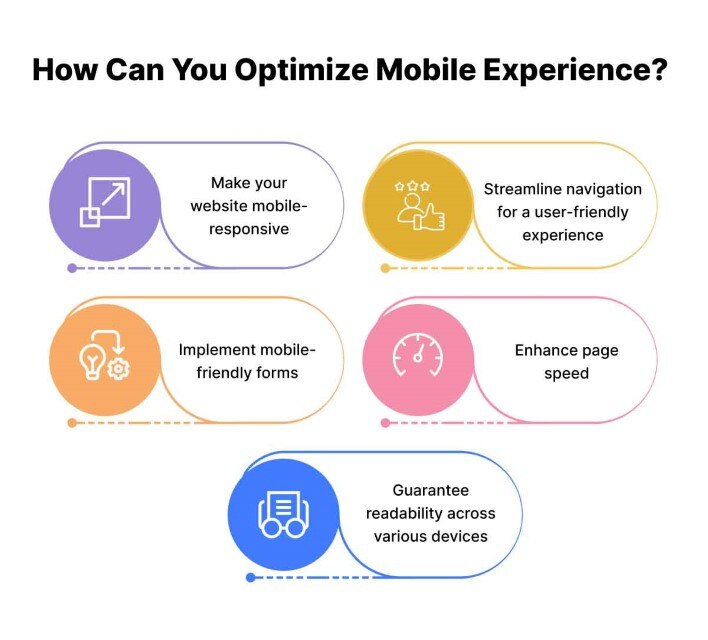
Performance Insights: The Metrics That Drive CX Optimization
Mastering the skill of crafting and implementing outstanding visitor experiences to attain business goals can be a daunting task. However, it proves to be one of the most effective methods for standing strong amid intense online market competition.Outlined below are key business metrics that businesses should align with their experience optimization strategies.1. Minimize Bounce Rates and Boost Session Duration
Considering all the efforts made up to this point, every action should contribute to two crucial business metrics – a decreased bounce rate and an increased duration of engagement across all brand communication platforms.The bounce rate represents the percentage of individuals who arrive on a website or install a mobile app and choose to leave without navigating to a second page. A higher bounce rate indicates a larger percentage of customers departing, potentially without returning. This also influences the amount of time an individual spends. Experience optimization, along with its integrated techniques, works to counteract this effect—specifically, by decreasing the bounce rate and increasing the time users spend on your channel.Here’s a guide on minimizing bounce rate and boosting time spent:- Identify components causing distractions
- Investigate the reasons behind these distractions
- Optimize the components and validate findings through A/B tests
- Plan to deliver an optimized and personalized experience
- Employ engaging elements like images, videos, strong CTAs, etc
- Develop a consistent content strategy
- Cater to both engaged and departing visitors
2. Enhance Conversion Efforts
3. Elevate Engagement across Diverse Marketing Channels
Whether a business allocates $200 or $200,000 monthly to its marketing channels, if it struggles to capitalize on even the slightest opportunities and optimize its return on investment (ROI) to justify the expenditure, it’s important to reconsider and reinitiate strategic planning.Here are some tips for you!- Invest in marketing channels that guarantee increased traction.
- Create attractive body content and calls-to-action that generate more clicks.
- Establish and enhance social media platforms, utilizing personalization to provide a delightful experience.
- Implement effective consumer engagement strategies such as search engine optimization (SEO), different offline campaigns, and search engine advertising (SEA).
- Incorporate gamification for better engagement.
4. Increased Repeat Purchases and Loyalty
Offering a positive visitor experience extends beyond merely minimizing the risk of service-related issues. It should serve as a means for companies to stand out in a competitive market—continuously optimizing their customer retention strategies and fostering increased repeat business.Outlined below are some effective methods to improve sales conversions and transform customers into repeat buyers:- Implement referral programs to expand the visitor base.
- Provide incentives such as exclusive deals or loyalty points to attract more customers and retain your existing ones
- Opt for various messaging platforms like live chat, emails, push notifications, SMS, and chatbots for retargeting and customer reacquisition.
- Execute personalized campaigns for increased sales
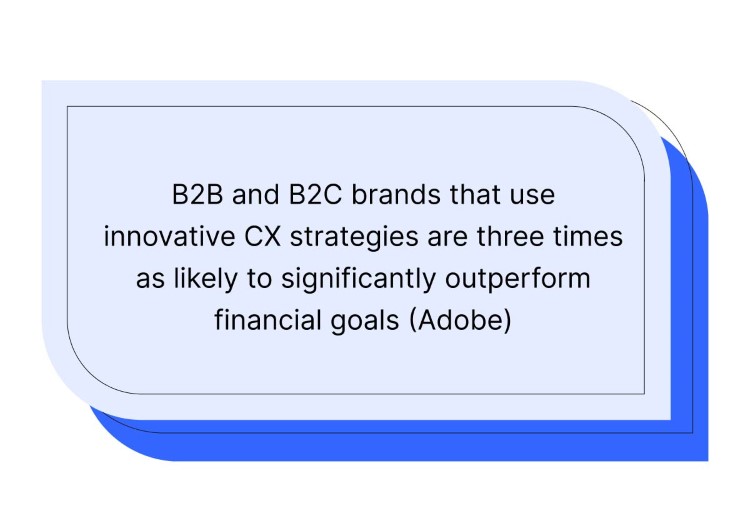
Top 10 Customer Experience Management Software for 2023
As no two businesses share identical objectives or technology infrastructure, there isn’t a one-size-fits-all customer experience optimization platform. Surveying the market, we’ve identified 10 leading customer experience optimization software platforms for 2023.1. Zendesk
Zendesk provides a robust and adaptable platform designed for customer service and experience optimization. It is scalable, catering to businesses of all sizes. Zendesk encompasses features like live assistance, security, help desk, a ticketing system, and community forums. Core Features:- Sunshine serves as an open CRM platform, employed to craft personalized customer experiences and customer applications, with Zendesk being built on the Sunshine foundation.
- It offers features encompassing application, product, data center and network security.
- Zendesk’s knowledge management software allows the translation of articles into 40 different languages, providing users with freedom and flexibility.
2. Tidio
- Supports communication across multiple channels, providing flexibility for both businesses and customers.
- enables customer service agents to respond to messages directly from a unified dashboard, irrespective of the originating channel.
- You have the flexibility to customize the chat widget’s appearance and behavior to match branding and user experience objectives.
- Tidio provides a mobile application for easy on-the-go access and handling of customer communications.
3. REVE Chat
REVE Chat is one of the best omnichannel customer experience optimization platforms, facilitating real-time communication with customers through a chat interface on the website and other widely used channels such as Facebook, WhatsApp, Viber, Instagram, and Telegram.In addition to delivering live chat capabilities, REVE Chat also offers an AI-powered chatbot to automate various customer service and communication tasks. As a business owner, investing in REVE Chat can significantly optimize customer engagement, support processes, and contribute to improved lead generation, and sales conversions. Core Features:- You can automate your entire customer service operations using REVE Chatbot, ensuring instant assistance for customers even when your team is unavailable.
- Enable your customers to initiate live chat sessions, facilitating interaction with your customer service department for immediate assistance.
- The video chat feature enables customers to initiate video calls with your agents directly through the chat interface.
- Observe and manage your customer’s screen in real-time during a chat session, enabling faster technical support, assistance with online purchases, or demonstrations of a product or service.
- Efficiently track and manage queries and customer chat requests using the ticketing system through the same interface.
- Reply to your web visitors and customers at any time using its mobile app, accessible on both Android and iOS platforms.
- Obtain a comprehensive overview of your business and team performance by accessing key metrics related to website visitors, chat history, and agent performance.
4. Hubspot Service Hub
HubSpot provides a range of digital tools for sales, marketing, and customer support, aiding businesses in cultivating strong relationships with their customers. The Operations Hub, a key element of the company’s Customer Experience Management (CXM), focuses on gathering, organizing, and analyzing customer satisfaction data. It aims to identify pain points in customer journeys and determine the factors that contribute to customer loyalty and willingness to endorse a product or service.Core Features:- React Swiftly – by integrating live chat and bots on your website
- Engage Effectively – utilize a universal inbox consolidating all customer interaction history
- Assist Customers – diminish customer support inquiries with a comprehensive knowledge base
- Transform Customers Into Advocates – Implement surveys and collect quantitative feedback.
5. Salesforce
Using Salesforce, you have access to a comprehensive CRM platform crafted to deliver an outstanding customer experience across all your business departments. This involves consolidating your sales, development, customer service, marketing, and IT departments into a unified framework, delivering customers a more personalized and cohesive experience. Salesforce offers a user-friendly solution that is easy to implement, promising a higher return on investment (ROI).Core Features:- Consolidated repository for overseeing customer details, interactions, and history.
- Automating sales procedures by handling tasks, tracking leads, and managing opportunities.
- Features for implementing and overseeing marketing campaigns, nurturing leads, and assessing campaign effectiveness.
- Powerful analytics tools for creating reports, dashboards, and gaining insights into business performance.
- Incorporation of artificial intelligence for predictive analytics, personalized suggestions, and data-driven insights.
6. Freshdesk
- Freshdesk provides a self-service-oriented customer experience through features like an AI-powered chatbot.
- The software comes with inherent automation capabilities and features for managing and assigning tickets.
- offers a range of additional features, including advanced ticket assignment, time tracking, mobile field service, and others.
7. LiveAgent
Considered among the top customer experience optimization platforms available, this software enhances communication, boosts agent efficiency, and elevates customer satisfaction through advanced features. Benefit from a powerful ticketing system, an advanced live chat native live chat assistance, knowledge bases, consumer portals, an integrated call center, and various other functionalities.Core Features:- Leverage pre-chat forms, instant typing views, proactive chat, or monitor the pages on your website being viewed and their duration.
- Consolidate all customer communications into a unified dashboard. LiveAgent seamlessly integrates with limitless contact numbers, emails, live chats, knowledge bases, diverse social networks including Facebook, Viber, Instagram, and Twitter.
- Enable your users with self-service capabilities by constructing multiple impressive knowledge bases. These are entirely customizable and can be built using a WYSIWYG editor.
- Integrate LiveAgent with all the tools and applications you utilize daily.
8. Zoho Desk
Zoho Desk stands out as a customer experience optimization software with an abundance of features, offering effortless deployment and operation. This tool enables businesses to efficiently handle customer communication through various channels, including phone, social media, website, and emails. Additionally, the software excels in automating repetitive processes, leading to significant time and cost savings. One notable feature of this tool is its capability to easily integrate with numerous other tools such as Salesforce, Slack, etc. Moreover, users have the advantage of developing their own customer help desk apps through Software Development Kits (SDKs). Core Features:- Zoho Desk allows you to establish and oversee service level agreements, ensuring prompt responses to customer issues.
- It is accessible via mobile devices, allowing support agents to stay connected and promptly address customer queries while on the move.
- The platform provides tools for reporting and analytics, enabling the tracking of key performance indicators, assessing team and agent performance, and gaining valuable insights into customer satisfaction.
- Collaboration features within Zoho Desk empower support agents to effectively communicate and collaborate in addressing customer issues.
- For businesses with multiple departments, it facilitates the management of tickets and support requests tailored to the specific needs of each department.
9. Podium
No matter the method you choose for interacting with your customers, Podium offers an effective solution for overseeing your conversations with them. The tool is capable of consolidating messages from various channels, allowing for efficient organization in one central location.With this tool, you can promptly view the status of messages, update the assigned employee’s location, and automate daily tasks. Podium ensures swift responses to your customers. Additionally, the mobile app from Podium simplifies staying connected with leads, ensuring your entire team stays informed, regardless of your or their location. Core Features:- Implement automated workflows to enhance the efficiency of daily tasks, ensuring a streamlined approach to responding to customer inquiries and handling messages.
- Utilize Podium’s collaboration tools, enabling diverse team members to collaborate in the management of customer interactions and tasks.
- Simplify the process of handling online reviews for businesses by consolidating them within a single platform.
- Initiate and oversee text marketing campaigns, empowering businesses to connect with and engage their audience through SMS.
10. Qualtrics
Qualtrics CustomerXM stands out as a premier customer experience optimization software, providing an extensive array of features crafted to assist businesses in comprehending, gauging, and improving CX across diverse touchpoints.The software is designed for conducting surveys, research, and customer experience management. It incorporates intelligent features such as Text IQ, Stats IQ, and Predict IQ and can be easily integrated with the tools you are currently utilizing. Core Features:- It provides an extensive array of tools and methodologies for gathering feedback, executing surveys, and evaluating customer satisfaction.
- Using CustomerXM, businesses can generate and visually represent customer journey maps, allowing for the identification of crucial touchpoints.
- It offers Digital CX
- Delivers advanced analytics functionalities, encompassing text and sentiment analysis, and data visualization.
